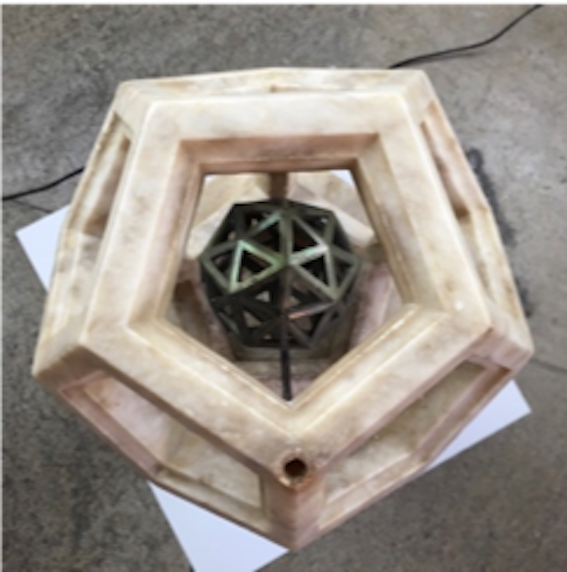
Inside the entrance hall of the History of Science Museum in Oxford is a curious architectural and mathematical model, consisting of a tower adorned with various geometrical shapes. Thought to have been made in England, it was given to the Bodleian Library in 1620 by Clement Edmondes, a London-based politician. While many have theorised exactly why it was made, with some believing it held a cosmological significance, its exact use remains mysterious.
The model had been on Cabinet’s photogrammetry wish list for some time, so the stars aligned when Daryl Green, Magdalen’s librarian and orchestrator of Thinking 3D, asked for a 3D digital model for the exhibition ‘Thinking 3D from Leonardo to Present’ on view at the Weston Library.
Making the Model: Challenges
With the help of Stephen Johnston, the Cabinet team spent a morning in the History of Science Museum photographing the pillar. As we had suspected, the 3D modelling of this object was particularly challenging. We quickly found that it was much larger than we had imagined, and was rarely removed from its case as it is simply too heavy. In addition, the metal geometrical shapes at the base of the alabaster pillar were detached, raising the question of whether these are in fact later additions.
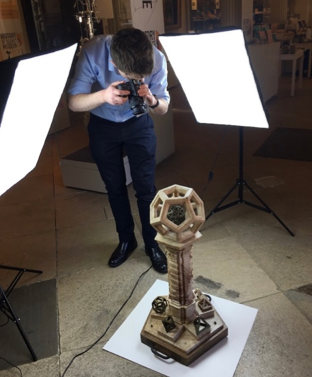
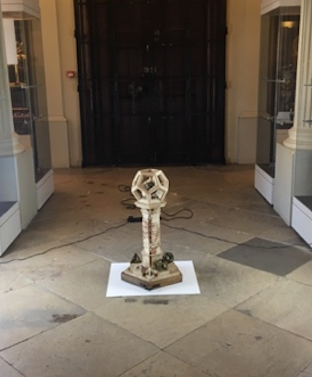
As the object consists of many hollow geometrical shapes, we had to take certain measures.First, the complexity of its shape, consisting of multiple geometrical forms attached to one another, meant we had to take more photographs than usual (over 400) to ensure we’d captured every angle possible – including the insides of the shapes.
Second, we had to consider the backdrop. When photographing something for the purpose of making a 3D model, the background is often irrelevant as it will be cut away. In this case, however, we wanted the photographs to clearly record the spaces inside and in-between parts of the object. To do so, we held up a white backdrop behind the pillar to contrast with the alabaster. This made the photography a two-person operation: with one person taking the image and the other holding the backdrop, which was moved as the photographer circled the pillar.
Photogrammetry
With the photographs taken, we could then insert them into our photogrammetry software, Agisoft PhotoScan. The software identifies the overlapping points between the images, then aligns them to create a sparse cloud (left), and then a dense cloud (right). For this model, around 20 million points of the pillar’s surface were identified.
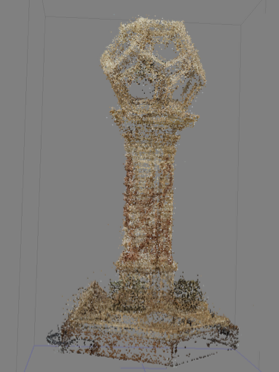
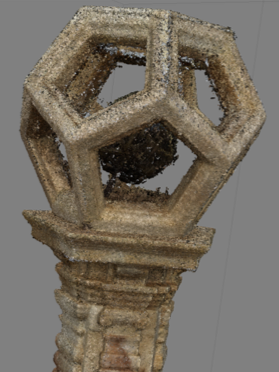
Although the dense cloud was clearly recognisable as the mathematical pillar, there were still parts which needed to be trimmed away. This was our next challenge, as the cutting away of so much negative space came with the risk of eliminating essential parts of the pillar. This often meant zooming into the dense cloud to place our viewpoints at the centre of the object and facing out, trimming the holes of the outer surface from the inside. With the trimmed cloud, we could complete the model by making a mesh, which records the shape of the object, and applying texture, which adds the photorealistic surface on top.
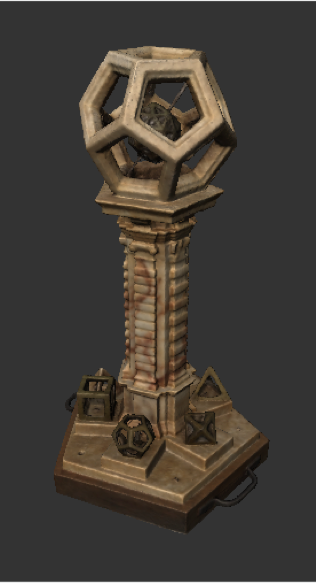
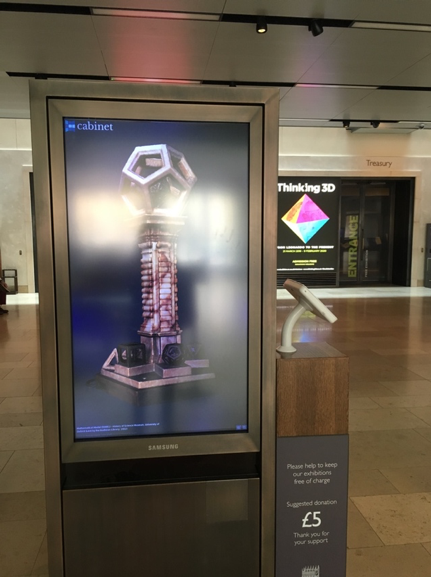
The fruits of our labour can be seen and interacted with on Cabinet (above left) and, if you’re in Oxford over Summer, on the screens in Blackwell Hall in the Weston Library (above right). To find out more about the mysterious mathematical model, you can visit the original in the History of Science Museum, or read more about it on their website.
Written by Sarah Griffin and Jamie Cameron.
